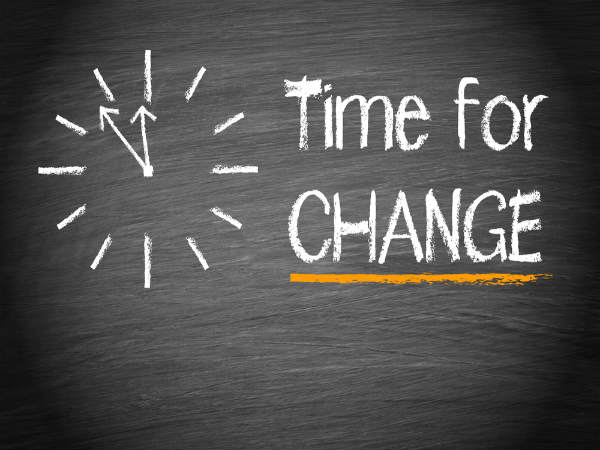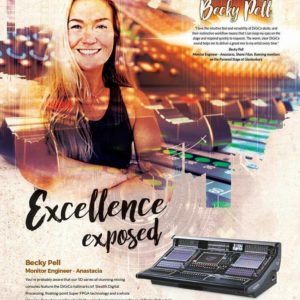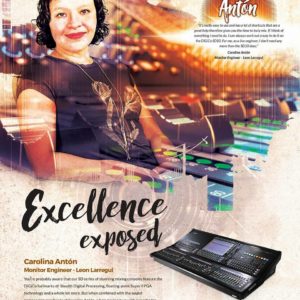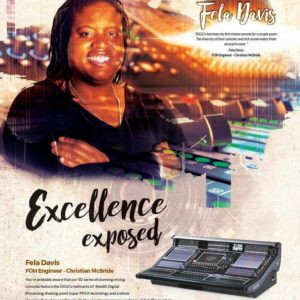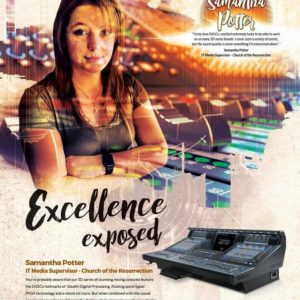We have all read the articles about the lack of women and diversity in music production. Articles titled, “Where are all the Women in (insert your discipline here)? We have all seen the clickbait headlines “Women have better Hearing than Men,” “What’s it Like Being the Only Women on Tour?”, and we have all read the comment sections that soon turn nasty.
We have discussed the lack of diversity in the industry ad nasuem. We are amazed year after year by the lack of women and other marginalized groups represented on panels, in ad campaigns, articles, and interviews.
We are once again horrified (but not shocked) to hear about sexual harassment and assault in our industry. And we are all tired of having to KICK DOWN THE DOOR to just get our foot in. It’s 2018, and we need to stop talking about it and take concrete steps towards inclusion in our industry.
We need to create actual change. Angela Davis asks and demands us to not only fight for a just world but to imagine the world we want and need. On diversity, Davis has this to say:
“Diversity — It should not be a “visual effect. You can have difference that truly makes a difference, but you can also have difference that doesn’t make a difference … that allows the machine to keep functioning in the same old way … sometimes more efficiently and effectively.”
We must ensure the steps we take don’t continue to make our problematic current institutional, cultural and societal structures stronger.
So as we move forward taking concrete steps to remake our world and industry, we want to hear your ideas, thoughts, and actions to enact change proactively. We will continue to talk with and listen to colleagues about their ideas, and we will keep updating these steps in the future.
Here are a few steps we can all take to begin working towards a more inclusive world.
Remember, diversity initiatives aren’t a checklist. This is an ongoing process and challenging work. We also acknowledge that our current institutional, cultural, and societal structures are fundamentally flawed and that until we fix those, these suggestions are only band-aids.
Addressing Unconscious Bias Within Your Company and Hiring practices.
We all have deep and ingrained unconscious bias. Yes, even the most enlightened and progressive among us. While this is hard and difficult work – we encourage everyone to try to unpack and understand it. You can do a google search to understand and work through unconscious bias – but here is a helpful article to get you started – Avoiding Unconscious Bias at Work.
When it comes to unconscious bias in hiring, we all need to understand that this affects who gets the chance to interview and who will get the job.
While many companies spend a lot of time, energy, and financial resources to increase diversity, others do not have the resources, and still, some are not even aware of these issues.
Very few companies ever improve their diversity without support from the top. Leadership needs to invest in diversity and inclusion. They must be role models in exhibiting inclusive behaviors, managing their own unconscious bias, and enthusiastically supporting employees from non-traditional backgrounds.
The Pipeline Deficiency – “You can’t find qualified candidates.”
This statement implies that women and ethnic minorities are, as a whole, underqualified.
If you believe this to be the case, as you only have a pile of resumes from white men, you need to expand your job search. Review where you are recruiting employment applications. Expand your job search by reaching out to groups that promote underrepresented people.
Understand the unconscious bias that affects your evaluation of qualifications. Men tend to be called back for an interview over women with the same qualifications, and the same happens with candidates that have black or latinx sounding names. Women and other marginalized groups tend to be rated more harshly after interviews.
Companies tend to hire from their networks; this leads to hiring people with very similar backgrounds as your current employees. Expand your job searches.
Companies may have a culture that is alienating. What are people from underrepresented groups saying about your company? You should act to address these issues.
Review the language in your job postings. This affects who applies. Is it off-putting to underrepresented groups?
Consider Enacting Blind Resumes
Resumes contain a lot of information about the applicant, but they also provide details about race, class, and gender. This affects who is considered.
Remove names – When women auditioned for orchestras behind a curtain it increased their chances by 50% – The Impact of Blind Auditions on Female Musicians
Consider removing university names and activities. These tend to signal race, gender and class differences.
Gapjumpers will test applicants on their skills and provide employers a list of candidates.
Instead of Blind Resumes Put in Place a Diverse Hiring Committee
Have a diverse hiring committee in place. The committee should all look through the same stack of resumes, and each brings their qualified candidates to the table. The committee hopefully will help check each members’ unconscious bias and will end up with a diverse group of candidates to choose from.
Again, this is dependent on the resumes you receive. If you only have a pile of resumes from white men, you need to expand your job search. Review where you are recruiting employment applications. Expand your job search by reaching out to groups that promote underrepresented groups.
To ensure that all candidates are treated the same, make sure they are all asked the same questions. Unstructured interviews can lead managers to overlook important details. Evaluate candidates during the interview process. Use a checklist.
Candidates should be interviewed by several managers. Do not use a panel to interview as your perspective can be shaped by other colleagues. Do not compare notes until the interview process is complete.
Adopt the Rooney Rule – This rule requires the NFL to interview minority candidates for every coaching job. You should interview several minority candidates for every job, but especially for managerial and leadership roles.
Unconscious Bias in Academia (this applies to Academia in our industry)
Although this will not eliminate all bias, a step we can take to address gender, race, and class bias is to have research and white papers submitted blindly – with no name or indication of gender, race, etc. Then we can judge these papers on their merits.
You must be aware of the spaces and organizations you are recruiting from. Is the culture alienating to marginalized groups? Are you recruiting from your networks that may be full of people that are similar to yourself? Expand your search by reaching out to groups that promote underrepresented groups. Make sure you are aware of the structural barriers in place that deter women and other underrepresented groups from submitting papers.
This should apply to mix off competitions as well.
For Educators
Please make sure you are featuring, sharing, and discussing engineers and producers of all genders and races. Include a balanced list of industry leaders in your coursework.
Make sure your classroom is inclusive and welcoming for all your students.
Make women and other marginalized people normal by highlighting them. Remember “You can’t be what you can’t see.”
Recommend diverse groups that can help your students find mentoring, internships, and support.
Trade Magazines
Feature women and other marginalized groups regularly.
Don’t pat yourselves on the back when you do finally feature a woman. Featuring three female engineers out of the 130 of the interviews you have done, is not progress. If you can’t find these people, then you are not interested, don’t care, and are not doing your research. These people are literally everywhere working in all aspects of our industry.
If you are interested in reaching out to trade magazines or manufacturers here is a sample letter you can modify and send to them
Marketing Departments
See above
We are tired of seeing the same white male engineers using your gear, and we like to support companies that promote inclusiveness.
Here is a diverse ad campaign DiGiCo ran in 2017, featuring four women Excellence Exposed
- Becky Pell
- Carolina Anton
- Fela Davis
- Samantha Potter
Panels for Trade Shows and Events
See all above
Put together a diverse committee that will make sure panels include representation from marginalized groups on panels and discussions.
Instead of putting together panels on “Women in Audio,” make sure women and other underrepresented people are featured on all panels.
List of resources
The EQL Directory
Gender Amplified
Diversify the Stage
Never Famous
Bands, festivals, TV shows, traveling Broadway musicals, and other touring groups need competent and diverse personnel who perform their tasks with a high level of expertise and professionalism day-in and day-out. Touring personnel need a way to market their expertise and let their availability be known within the industry. Both groups need a way to broaden the scope of available jobs, resources, and candidates, and break out of the cycle of peer-to-peer referrals and word of mouth as the primary way to hire and get hired.
POC in Audio Directory
The directory features over 500 people of color who work in audio around the world. You’ll find editors, hosts, writers, producers, sound designers, engineers, project managers, musicians, reporters, and content strategists with varied experience from within the industry and in related fields.
While recruiting diverse candidates is a great first step, it’s not going to be enough if we want the industry to look and sound meaningfully different in the future. Let us be clear: this isn’t about numbers alone. This is about getting the respect that people of color—and people of different faiths, abilities, ages, socioeconomic statuses, educational backgrounds, gender identities, and sexual orientation—deserve.
50+ All-women and feminist sound/music tech collectives, co-ops, non-profits
Women in Lighting
Femnoise
A collective fighting for the reduction of the gender gap in the music industry. But we soon realized that the solution is not just activism. We have to go one step further: to connect and empower underrepresented individuals on a large scale, worldwide.
POC Theatre Designers and Techs
Wingspace
is committed to the cause of equity in the field. There are significant barriers to accessing a career in theatrical design and we see inequalities of race, socioeconomic status, gender identity, sexual orientation and disability across the field.
Parity Productions
Fills creative roles on their productions with women and trans and gender nonconforming (TGNC) artists. In addition to producing their own work, they actively promote other theatre companies that follow their 50% hiring standard.
Production on Deck
Uplifting underrepresented communities in the arts. Their main goal is to curate a set of resources to help amplify the visibility of (primarily) People of Color in the arts.
She is the Music DataBase
Live Nation Urban’s Black Tour Directory
The F-List Directory of U.K. Musicians
FUTURE MUSIC INDUSTRY
WOMEN/ NON-BINARY DJS/PRODUCERS
South America – Productores por país – Podcasteros
Women in Live Music DataBase
Women’s Audio Mission Hire Women Referrals
Organizations working towards Diversity and Inclusion
Turn It Up is a collective working toward gender parity in music.
The Women of Rock Oral History
Alice Bag’s Women in L.A. Punk Archives
Jenny Woolworth Radical Repository
She Shreds – Compilation of Anti-Racism Resources For White & Non-Black Musicians
International Alliance for Women in Music
50+ All-women and feminist sound/music tech collectives, co-ops, non-profits
More than a Few Female Music Producers
150 Female Producers You Need to Know
